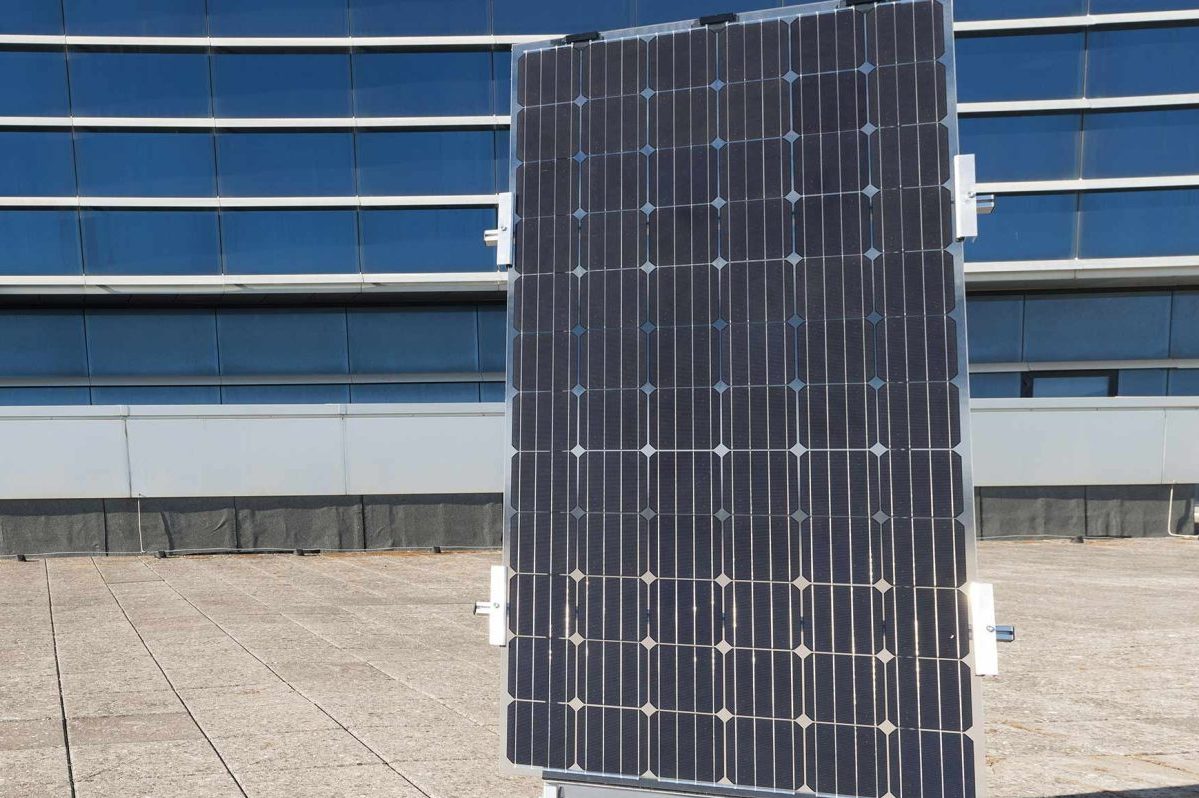Solar photovoltaic cells convert energy from the sun into electricity. There are different types of PV cells used from different materials, with the most common material used being silicon. The different types of photovoltaic cells include:
1. Monocrystalline Silicone Cell
This is one of the main types of photovoltaic cells on the market. Produced from monocrystalline silicon, this solar PV cell has 15% efficiency, which makes it one of the most effective PC cells on the market.
It is made with monocrystalline silicon, which is high purity silicon. The single-crystal silicon seed is dipped in molten silicon before it is slowly pulled out. This creates a single-crystal ingot which is afterward cut into thin wafers. They are then polished, doped, and coated to form a p-n junction.
Monocrystalline silicon PV cells are prevalent in photovoltaic panel construction and for outdoor power applications. This is owing to their high efficiency and wafer thickness.
On the downside, monocrystalline silicon cells are more expensive than their other counterparts. Hence, they may not be the most ideal choice for homeowners. The production process is also slow and tedious and considered wasteful because the cells need to be cut into wafers. Also, these cells are more likely to break the circuit when exposed to shade or dirt.
2. Polycrystalline Silicon Cell
Individuals with a tight budget may want to consider the polycrystalline silicon cell, which is more affordable than the monocrystalline silicon cell. Also known as a multi-crystalline silicon cell, this PV cell has a lower manufacturing cost and is an ideal choice for homeowners.
However, unlike its counterpart, it has low efficiency because it consists of different smaller grains of crystal that are melted before they are recrystallized. This creates boundaries between the crystals, which can restrict the movement of electrons.
As a result, the positive holes combine with the negative electrons, reducing the cell’s power output. Generally, you can expect energy efficiency of between 10 and 14% with this PV cell.
Polycrystalline silicon cells can be made using two methods. The first method includes pulling an ingot with a cube shape from the molten silicon. This silicon is then sawn and packaged like monocrystalline silicon cells.
Alternatively, this cell can by casting a thin polycrystalline silicon ribbon from molten silicon. This method is known as edge-defined film-fed growth (EFG).
3. Thin-Film Cells
Constructed from non-crystalline silicon, thin-film cells are more flexible and durable than their crystalline counterparts. As the name may suggest, it uses thin layers of semiconductor materials, which are printed or sprayed on a metal, plastic, or glass backing substrate.
The semi-conductors in these cells are typically a hundred times thinner than the wafer layers used on photovoltaic cells. Because of their thin structure, these cells require 1% less than what is required for the crystalline cell.
Consequently, they are much cheaper to produce and have a less intensive manufacturing process. This makes thin-film cells a more viable option for homeowners.
On the downside, thin-film materials have a low energy efficiency when compared to single crystal models. They are also more likely to degrade than crystalline cells.
The most common thin-film PV type is the amorphous silicon (a-Si). This thin film is produced by placing thin silicon layers on a glass substrate. It boasts the highest cost reduction and can help lower manufacturing costs.
The other types of thin-film cells include Copper Indium diSelenide (CIS), Copper Indium Gallium diSelenide (CIGS), and Cadmium Telluride (CdTe).
Other Types of Photovoltaic Cells
Besides the three main photovoltaic cells, other types of photovoltaic cells are being developed with high-efficiency material. Hence, they are ideal where high efficiency is crucial, including spread commercial applications. They include:
Multijunction PV Cell
Most PV cells have one p-n junction to convert energy into electricity. However, multijunction has 2 or more p-n junctions for collecting energy from multiple portions of the light spectrum. Since the junctions are layered on each other and this increases its overall efficiency. However, they are very expensive to produce, making them viable for commercial application.
Gallium Arsenide
This crystalline PV cell is made from gallium arsenide (GaAs) and has a wider band gap and higher light absorption. This material is more efficient than silicon, making it more suitable for space applications and other areas where high efficiency is required.

